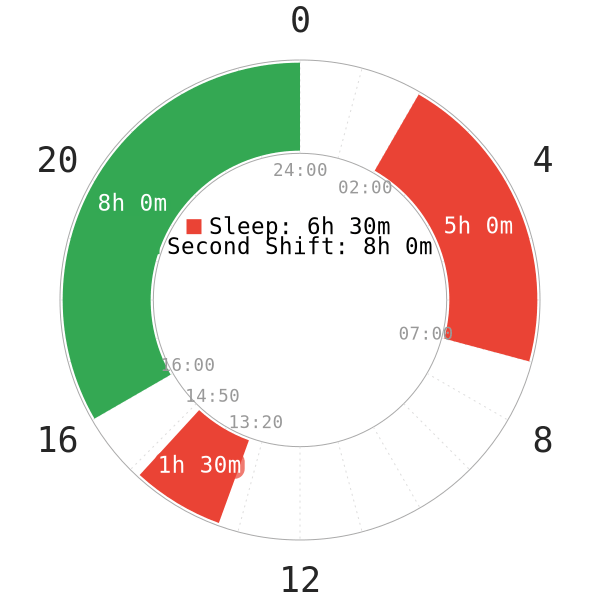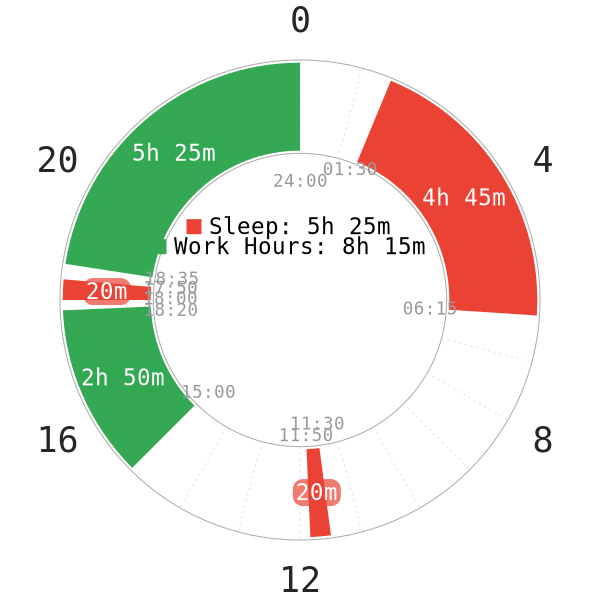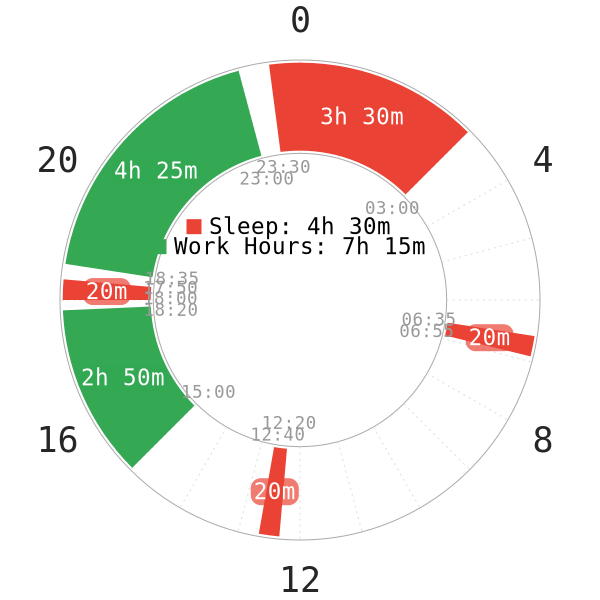Introduction
A second shift may be unfamiliar to some people, but a few people have this work schedule. Other than the first shift, the second shift usually runs from 4 PM to midnight. This as a result occupies all afternoon and evening hours. There may or may not be work breaks; if there is a break, it possibly falls in the evening hours.
Despite the possibly more overwhelming conditions than a first shift, polyphasic sleep remains viable. The choices may be more limited, but there actually are several schedules that can accommodate your work time.
Polyphasic Schedules for Second Shift
Overview
Because this work shift basically coincides with the most alert daytime hours, daytime napping is already viable from the beginning. Therefore, workers can opt for a nap before heading out to work.
- However, the long work gap takes away the option to schedule a nap around ~4-5:30 PM like on first shifts.
- Depending on the placement of the break(s), having late naps increases the risk of SWS wakes.
- Placing the evening nap too close to the core (< 4h) can also cause difficulty falling asleep in the core. Because of this, workers should not utilize naps during second shift’s break, even if there is break time.
- Starting a dark period while having the second shift can be very difficult. However, if this is possible, then you can start the dark period near the end of your work shift.
- Dual Core/Multi-core schedules are usually quite difficult; the first core should cover as much of the SWS peak as possible.
- Sub-5h TST schedules are also a challenge for the same reason. However, one can overcome this drawback by maintaining the shifted circadian rhythm.
Biphasic Sleep

- Although not the standard scheduling, it is possible to schedule Siesta-(extended) and Everyman 1 for second shift. Overall, biphasic schedules with a daytime nap are still easy to set up.
- Segmented sleep may work, with both cores shifted forward, however. Even then, the wake gap between 2 cores and the second core ends late in the day. This in return will limit quite a bit of morning hours for social time and other certain commitments.
Everyman Sleep


- Everyman sleep also viable for the second shift; nevertheless, the work break usually should be early enough to avoid SWS naps. Up to Everyman 3 is possible, yet the adaptation and scheduling are going to be very challenging.
- If the work schedule ends earlier (e.g, 11 PM), it is then possible to arrange more naps across the daytime hours and enjoy some SWS peak hours.
Other Notes
Similar to first shift, here are a couple things to note:
- You may want to make arrangements with your employer in advance to see if sleeping during afternoon/evening break is acceptable.
- In addition, you might also want to make arrangements with your coworkers or find a quiet place to avoid possible disturbances during your sleep time. Excitement and worry before nap time can lead to less restful naps.
- Avoid eating and excessive physical activity too close to the sleep sessions. Both of these may increase sleep onset of your naps. However, this may be prohibitive if your work requires a lot of physical activity.
- Make sure your break is long enough to afford the nap. Usually, at least ~30m breaks are common or possible in a lot of workplaces.
- If you are planning to have some sleep in the SWS peak (~11 PM-midnight range), check with your employer if your work hours can consistently end at somewhat earlier hours. This is because going home and cooling down for sleep will take some time.
Main authors: Crimson & GeneralNguyen
Page last updated: 30 March 2021
